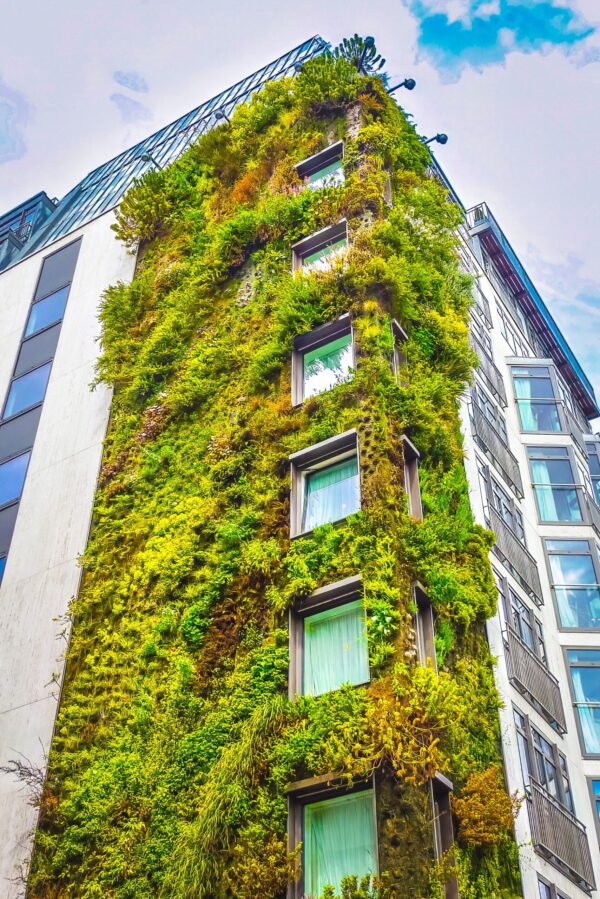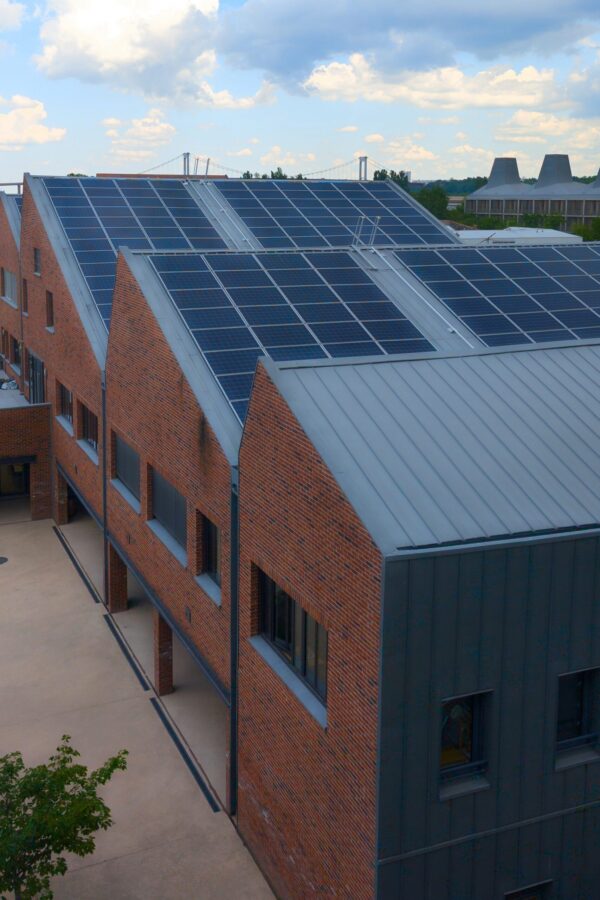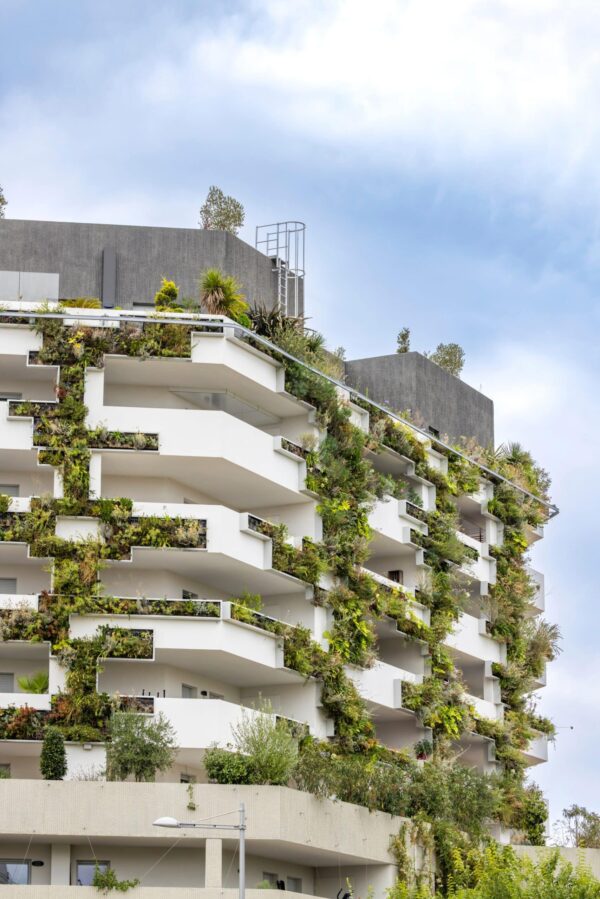Sustainability is a buzzword that has already infiltrated many industries. With construction being a major contributor to global energy consumption, it is no surprise that sustainable architecture has become a leading consideration in how buildings and cities are built.
Now, architects are challenged not only in crafting a design that excels in form and function, but also in being able to come up with integrated solutions that take into account environmental factors.
To better understand this concept. It’s important to discuss what sustainability in architecture really means.

The World Commission on Environment and Development defines sustainability as “development that meets the needs of the present without compromising the ability of future generations to meet their own needs.”
When applying this complex concept to architecture, it then refers to design that creates healthy living environments while aiming to minimise negative environmental impacts, energy consumption, and use of human resources.
Sustainable architecture is reflected in a building’s materials, construction methods, resource use and design in general. The design must also facilitate sustainable operation during the building life cycle, including its ultimate disposal. While it has to be functional and aesthetically superior, the space has to be constructed with the mindset of achieving long-term energy and resource efficiency.
Sustainable architecture is also referred to as green architecture or environmental architecture. It challenges architects to produce smart designs and use available technologies to ensure that structures generate minimal harmful effects on the ecosystem and the communities.
If you are not from the construction world, it may be difficult to get your head around this concept, so giving an oversimplified example at this stage may be necessary.
Imagine that there is a plot of land that you think is conveniently located for you to build your house. The problem, however, is that there are 100 trees planted on it and that these trees are the last of their kind. If sustainability is not a concern, what you’ll probably do is cut down all the trees to clear the space and use all the lumber to build your house, not caring if nobody else gets the chance to use the same kind of trees in the future.
This is the opposite of sustainable architecture. Sustainable architecture means putting environmental factors into consideration:
These are just some factors that should be considered when approaching the sustainable concept in design and construction. Sustainable architecture needs to recognise the existing natural resources and environmental conditions in the construction site and how to incorporate these into the build.

“[Buildings and construction] are key drivers of the climate crisis, consuming 32 per cent of global energy and contributing to 34 per cent of global CO2 emissions.”
-UN Environment Programme, Global Status Report for Buildings and Construction 2024/2025
While metropolises are continuously expanding, the Earth itself is not getting any bigger. This growth has a huge impact on the environment because the process of developing new habitats for our communities constantly requires a huge chunk of our natural resources. The Earth is not an unlimited well that can replenish itself to match the pace of modernisation.
According to the UN Environment Global Status Report 2024-25, building and construction account for “more than 32% of global energy use and contribute 34% of global CO2 emissions, with materials like cement and steel responsible for 18% of these emissions.” Progress is not sufficient to meet targets, despite initial successes – with “CO2 from building operations rising by 5.4% instead of falling.”
Designing a building’s form and appearance can no longer be carried out in isolation. Building services, fabric and controlled fittings are now all intrinsically linked. A delicate balance now needs to be made between a building’s form, function and interactions with its surrounding environment to be considered sustainable development.
In implementing sustainable architecture, whether in new or old builds, there are accompanying environmental, economic and social benefits.

It is easy to throw around the term “sustainable design” when talking about a new construction project, but in reality, ensuring that a building design is indeed sustainable is a complex process.
There are several ways and means that have to be considered when designing a sustainable building, which include materials, energy, resources, space planning, weather, and many other factors. It is a detail-oriented practice that requires experts who are in touch with the latest methodologies and techniques that are proven to be effective and cost-efficient at the same time.
The planning phase takes utmost importance. At the very early stages, architects who specialise in sustainability must create a game plan that incorporates environmental mindfulness into the various aspects of the construction process. They must be knowledgeable about how to maximise the use of innovative materials and advancements in construction to ensure that the end result will be effective.
Voluntary sustainability standards are available to help assess and compare the level of sustainable design and construction a building achieves. In the UK, projects can apply for a BREEAM Certification. This is an international scheme that provides independent third-party certification of the assessment of the sustainability performance of individual buildings, communities and infrastructure projects.
What this means is that in order to achieve the highest BREEAM sustainability standards, a property owner must make it a priority to consult with experts who can provide sustainability-related advice when undertaking a design and construction project.
Achieving the highest level of sustainability standard requires significant consultant involvement during the earliest RIBA Design stages to ensure sustainability issues are addressed and embedded with the project, and not just an afterthought on the scheme.

Sustainable architecture benefits everyone: individuals, businesses, communities, the economy, and the environment. It is true that more and more countries are leaning towards sustainability, but the progress achieved is still not able to keep up with the unceasing demand for resources.
There are also challenges that may hinder the advancement of sustainable architecture, and one of the biggest obstacles is monetary cost. While a sustainable structure might save you more money in the long-term, there is still the common belief that sustainable materials and methods are way more expensive than traditional resources.
This is not always necessarily true, and that’s why involving sustainability experts early in the design process is a critical decision. Working with a design team that understands the complexities, demands, and challenges of constructing a sustainable building will be able to better offer proven solutions that can deliver both the required environmental benefits and cost-efficiency.
For advice on sustainable architecture, contact Barker Associates to find out how they can help your project.

Our experience and vision have shaped hundreds of projects across sectors, from energy and funding to architecture and design, helping bring ideas to life.
